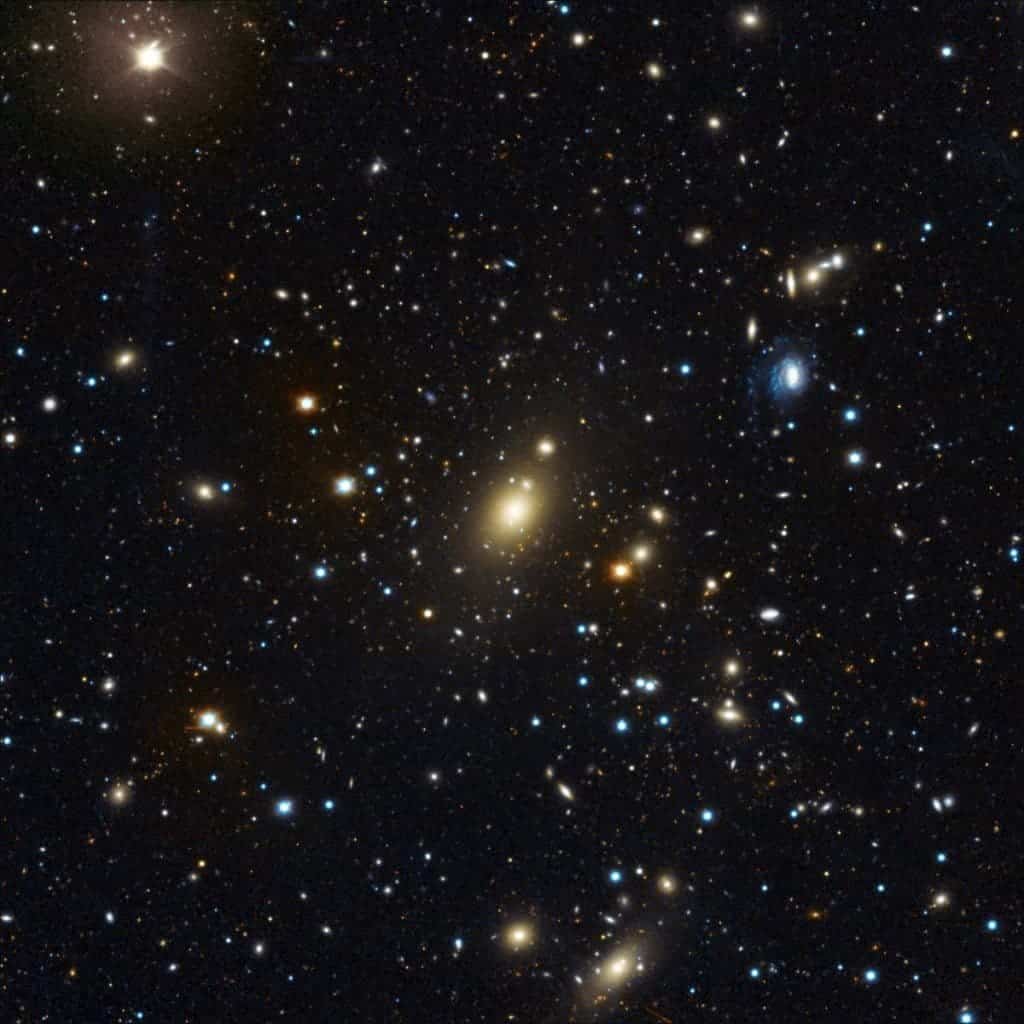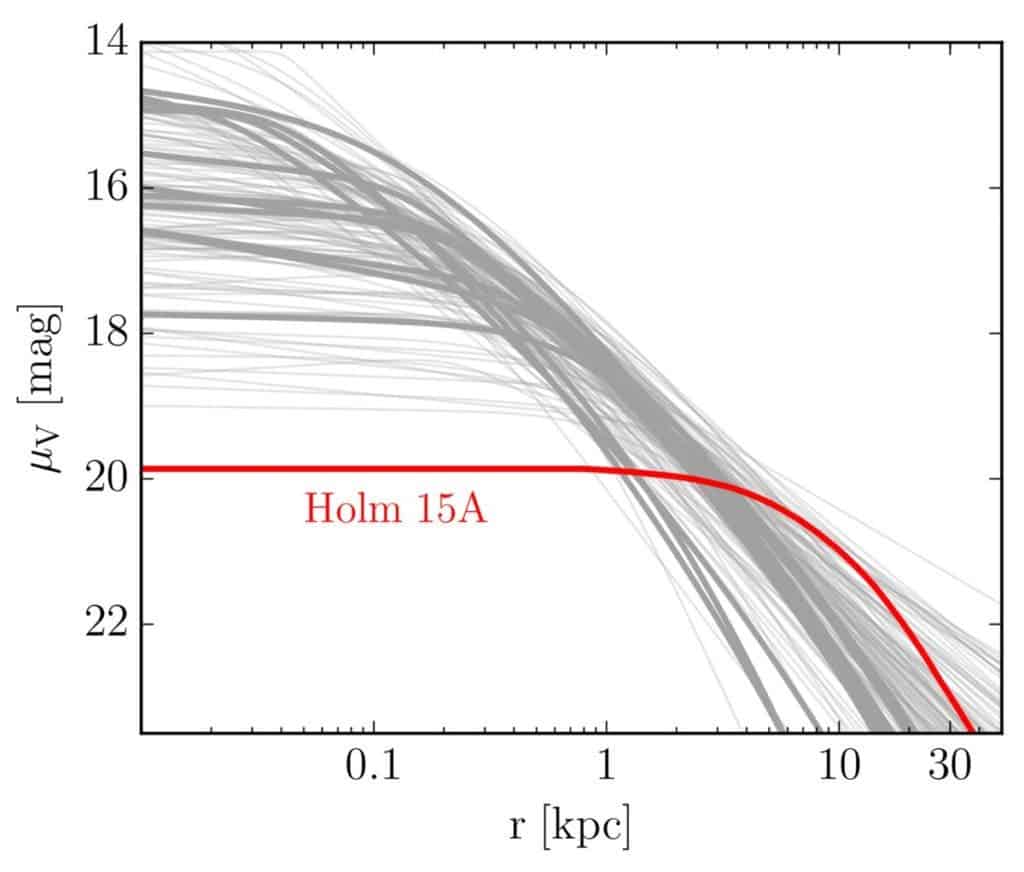In a galaxy far, far away… astronomers have discovered the most massive black hole in the local observable universe. According to recent observations, the black hole at the center of the Holm 15A galaxy has a staggering 40 billion solar masses. For comparison, the Milky Way’s supermassive black hole measures only 4 million solar masses.

The discovery came to light while a team of astronomers, from the Max Planck Institute for Extraterrestrial Physics and the University Observatory Munich, was surveying Abell 85. It is a galaxy cluster located about 740 million light-years from Earth, which consists of more than 500 individual galaxies.
Holm 15A came to the researchers’ attention when they noticed a huge dark patch at its center. For a galaxy whose stars are equivalent to 2 trillion solar masses — in other words, a very bright galaxy — this was highly surprising to see.
Observations suggested that the murky and diffuse center of Holm 15A is almost as large as the Large Magellanic Cloud, a big clue hinting towards the presence of a black hole with a very high mass.
“There are only a few dozen direct mass measurements of supermassive black holes, and never before has it been attempted at such a distance,” said Jens Thomas, a Max Planck researcher and the lead author of the study. “But we already had some idea of the size of the Black Hole in this particular galaxy, so we tried it.”
With the help of the observatory at the University Observatory Munich and the MUSE instrument at the Very Large Telescope in Chile, the astronomers were able to estimate the black hole’s mass by measuring the motion of stars around the galaxy’s core. The results suggest that at the heart of Holm 15A lies a behemoth with 40 billion solar masses — the most massive black hole yet known to scientists in the local universe.
“This is several times larger than expected from indirect measurements, such as the stellar mass or the velocity dispersion of the galaxy,” says Roberto Saglia, senior scientist at the Max Planck Institute for Extraterrestrial Physics.
The diffuse galactic core also suggests that Holm 15A formed after two smaller galaxies merged. Both had supermassive black holes at their center, so when the galaxies merged, so did the black holes. As the black hole became more massive, so did the rate at which stars were expelled from the center due to the gravitational interactions between the merging elements, a physical process known as core-scouring. And, because there is no gas left in the galactic core to form new stars, it will look depleted, dim, and diffuse.
“The newest generation of computer simulations of galaxy mergers gave us predictions that do indeed match the observed properties rather well,” Thomas said. “These simulations include interactions between stars and a black hole binary, but the crucial ingredient is two elliptical galaxies that already have depleted cores. This means that the shape of the light profile and the trajectories of the stars contain valuable archaeological information about the specific circumstances of core formation in this galaxy—as well as other very massive galaxies.”

The study’s key insight lies in the newly established relationship between black hole mass and a galaxy’s surface brightness. In the future, astronomers could use this insight to estimate a black hole’s mass in more distant galaxies where our instruments are unable to measure stellar motions in the vicinity of a galactic core.
The results are due to be published in The Astrophysical Journal. The findings were published in the preprint server ArXiv.






